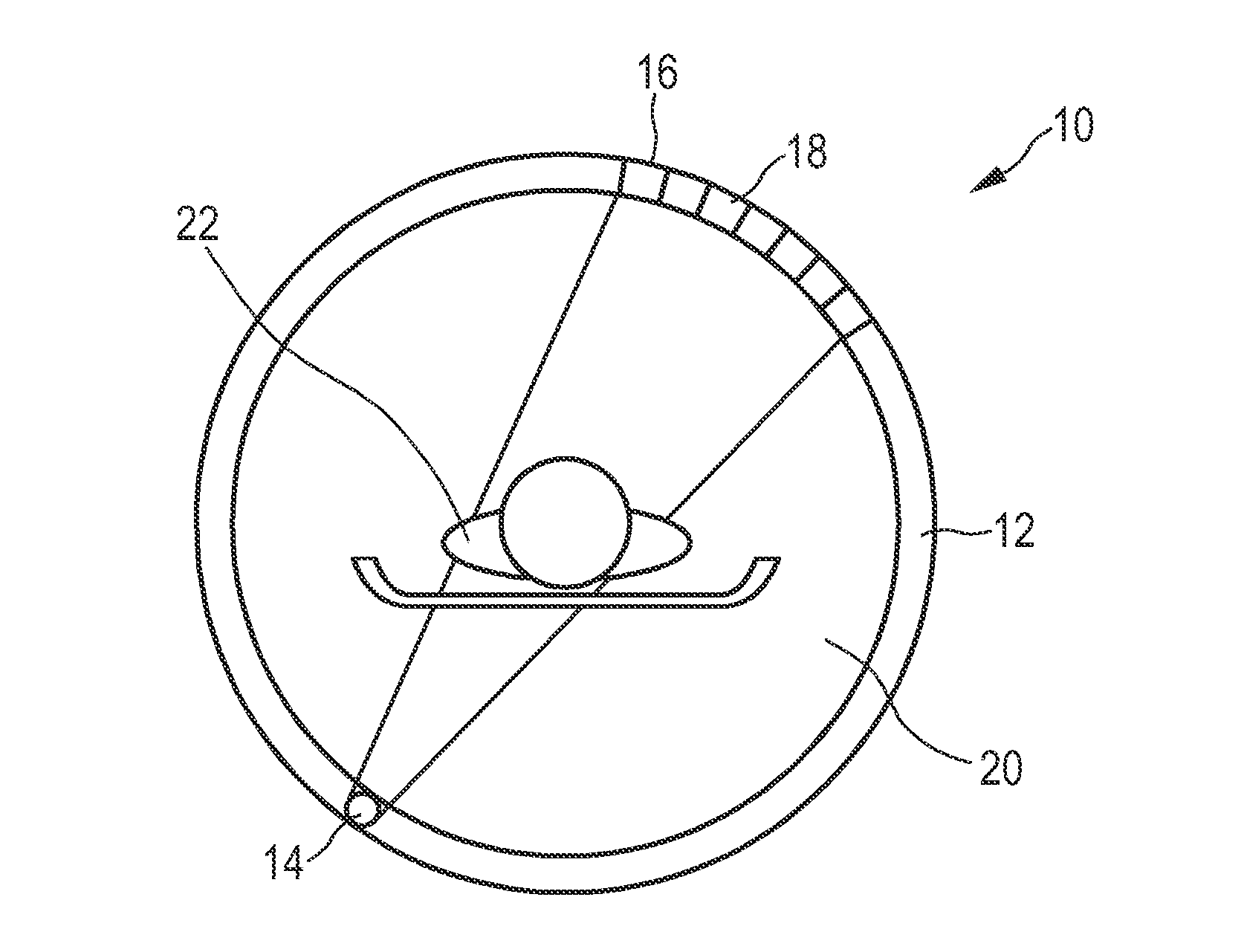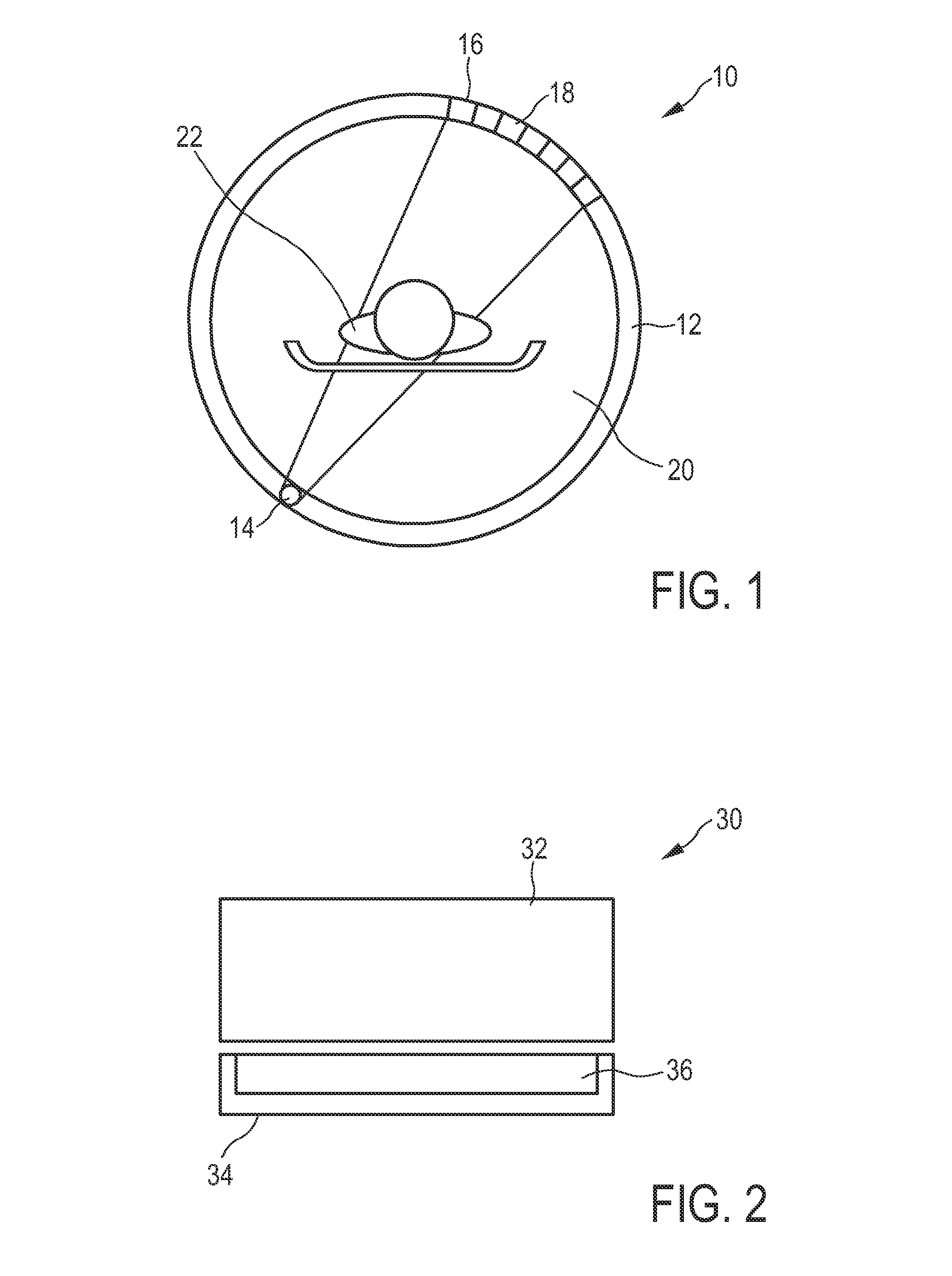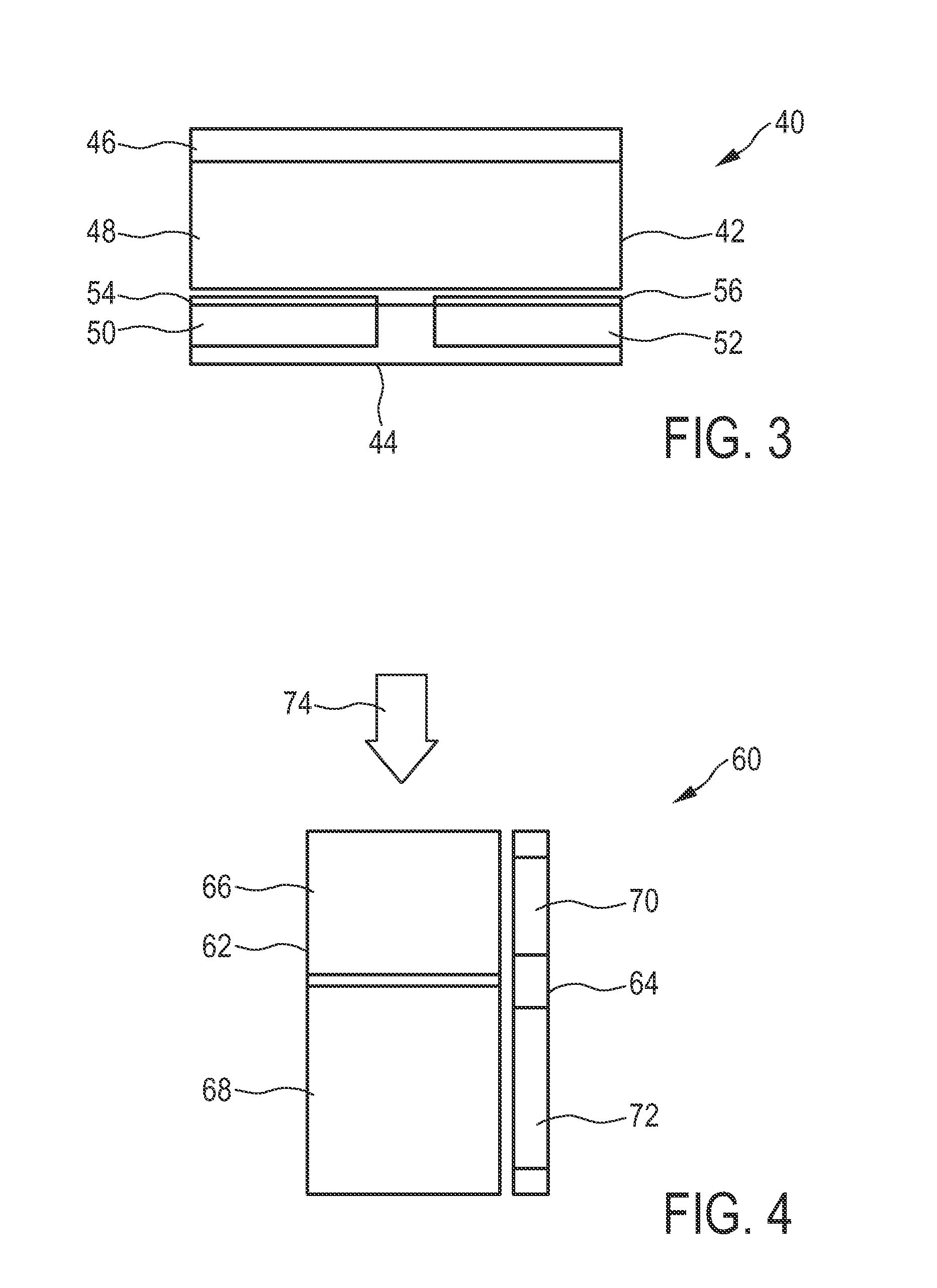Mixed oxide materials
- Summary
- Abstract
- Description
- Claims
- Application Information
AI Technical Summary
Benefits of technology
Problems solved by technology
Method used
Image
Examples
examples 1 to 4
[0034]Stoichiometric amounts of Y2O3 (Rhodia), CeO2 (Neo Materials), Tb4O7 (Guangdong and Neo Materials), Al2O3 (Baikowski) were weighed in, in proportions to create mixed oxide materials having the formula (Y0.395Tb0.595)3Al5O12:Ce0.01. In order to dope these materials with 25 ppm, 50 ppm, 100 ppm and 200 ppm, respectively of V, a corresponding amount of NH4VO3 was dissolved in ethanol, mixed with the Al2O3, precipitated and dried on a rotary evaporator. The modified Al2O3 obtained this way was then employed in the solid state synthesis of the desired mixed oxides. The solid starting materials were mixed and milled with heptane in agate pots. After the mixing process, the samples were dried in a tube oven to remove the mixing liquid, and the samples were sintered in a horizontal tube furnace (Entech 01820 series) at 1550° C. in an aluminium crucible for 4 hours in a H2 / N2 flow in order to reduce Ce4+ to Ce3+ and Tb4+ to Tb3+.
[0035]The obtained samples were tested for photoluminesce...
PUM
 Login to View More
Login to View More Abstract
Description
Claims
Application Information
 Login to View More
Login to View More - R&D
- Intellectual Property
- Life Sciences
- Materials
- Tech Scout
- Unparalleled Data Quality
- Higher Quality Content
- 60% Fewer Hallucinations
Browse by: Latest US Patents, China's latest patents, Technical Efficacy Thesaurus, Application Domain, Technology Topic, Popular Technical Reports.
© 2025 PatSnap. All rights reserved.Legal|Privacy policy|Modern Slavery Act Transparency Statement|Sitemap|About US| Contact US: help@patsnap.com



